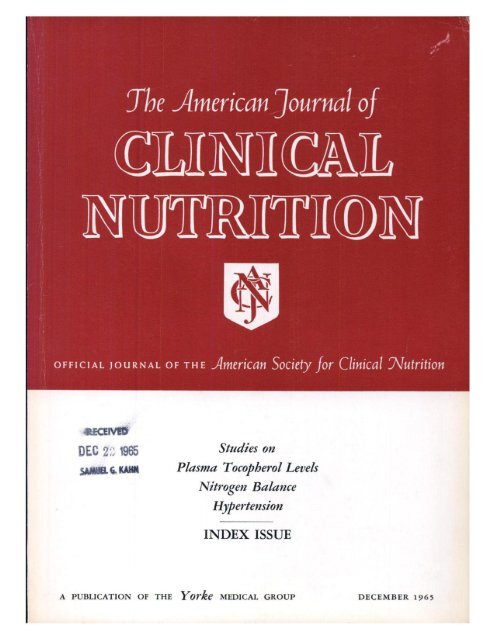产前多种维生素和矿物质中选定营养素和重金属的含量:一项观察性研究。
IF 6.5
1区 医学
Q1 NUTRITION & DIETETICS
引用次数: 0
摘要
背景:越来越多的消费者依赖产前多种维生素和矿物质(pmvm)强调了确保其质量和安全的重要性。怀孕期间摄入足够的胆碱和碘对胎儿发育至关重要,但PMVM产品中标签含量与实际含量之间的差异会带来重大的健康风险。此外,潜在存在的有毒重金属,如砷、铅和镉,引起了对潜在不利健康影响的关注。目的:本研究旨在评价非处方和处方pmvm在胆碱和碘含量以及砷、铅和镉方面的影响。方法:本观察性研究评估了来自网上零售商和当地零售药店的非处方和处方PMVM产品的便利样本。产品采用液相色谱质谱法分析胆碱,电感耦合等离子体质谱法分析碘、砷、铅和镉。将胆碱和碘的实际含量与报告的标签量进行比较,并将重金属含量与美国药典标准进行比较。结果:共分析了32种非处方PMVM产品和15种处方PMVM产品。47种产品中有12种(25.6%)报告胆碱含量,其中5种(41.7%)在权利要求量的20%以内,2种(16.7%)超过权利要求量的20%,5种(41.7%)低于权利要求量的20%。47种产品中有25种(53.2%)的碘含量在要求量的20%以内,其中4种(16.0%)低于要求量的20%,20种(80.0%)低于要求量的20%,1种(4.0%)高于要求量的20%。分别在7个(14.9%)、32个(68.1%)和29个(61.7%)pmvm中发现了可测量的砷、铅和镉;然而,没有pmvm超过美国药典标准限值。结论:目前的PMVM产品因遗漏或不准确的必需营养素含量而具有误导性。美国需要对膳食补充剂进行联邦监管,以确保PMVM配方中必需营养素的准确含量。本文章由计算机程序翻译,如有差异,请以英文原文为准。
Content of selected nutrients and heavy metals in prenatal multivitamins and minerals: an observational study
Background
Increasing consumer reliance on prenatal multivitamins and minerals (PMVMs) underscores the importance of ensuring their quality and safety. Adequate choline and iodine intakes during pregnancy are crucial for fetal development, yet discrepancies between labeled and actual content in PMVM products pose significant health risks. Additionally, the potential presence of toxic heavy metals, such as arsenic, lead, and cadmium, raises concerns about potential adverse health effects.
Objectives
This study aimed to evaluate nonprescription and prescription PMVMs regarding choline and iodine content as well as arsenic, lead, and cadmium.
Methods
This observational study evaluated a convenience sample of nonprescription and prescription PMVM products from online retailers and local retail pharmacies. Products were analyzed using liquid chromatograph mass spectrometry for choline and inductively coupled plasma mass spectrometry for iodine, arsenic, lead, and cadmium. Choline and iodine actual amounts were compared with reported label amounts and heavy metal amounts were compared with United States Pharmacopeia standards.
Results
In total, 32 nonprescription and 15 prescription PMVM products were analyzed. Choline amounts were reported on 12 of the 47 (25.6%) products including 5 (41.7%) within 20% of the claimed amount, 2 (16.7%) over the claimed amount by >20%, and 5 (41.7%) under the claimed amount by >20%. Iodine amounts were reported on 25 of the 47 (53.2%) products including 4 (16.0%) within 20% of the claimed amount, 20 (80.0%) under the claimed amount by >20%, and 1 (4.0%) over the claimed amount by >20%. Measurable amounts of arsenic, lead, and cadmium were found in 7 (14.9%), 32 (68.1%) and 29 (61.7%) PMVMs, respectively; however, no PMVMs exceeded United States Pharmacopeia standard limits.
Conclusions
Current PMVM products are misleading through omission or inaccurate content of essential nutrients. Federal regulation of dietary supplements in the United States is needed to ensure accurate content of essential nutrients in PMVM formulations.
求助全文
通过发布文献求助,成功后即可免费获取论文全文。
去求助
来源期刊
CiteScore
12.40
自引率
4.20%
发文量
332
审稿时长
38 days
期刊介绍:
American Journal of Clinical Nutrition is recognized as the most highly rated peer-reviewed, primary research journal in nutrition and dietetics.It focuses on publishing the latest research on various topics in nutrition, including but not limited to obesity, vitamins and minerals, nutrition and disease, and energy metabolism.
Purpose:
The purpose of AJCN is to:
Publish original research studies relevant to human and clinical nutrition.
Consider well-controlled clinical studies describing scientific mechanisms, efficacy, and safety of dietary interventions in the context of disease prevention or health benefits.
Encourage public health and epidemiologic studies relevant to human nutrition.
Promote innovative investigations of nutritional questions employing epigenetic, genomic, proteomic, and metabolomic approaches.
Include solicited editorials, book reviews, solicited or unsolicited review articles, invited controversy position papers, and letters to the Editor related to prior AJCN articles.
Peer Review Process:
All submitted material with scientific content undergoes peer review by the Editors or their designees before acceptance for publication.

 求助内容:
求助内容: 应助结果提醒方式:
应助结果提醒方式:


